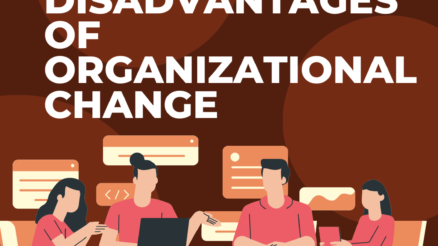Have you ever felt overwhelmed or exhausted by the constant changes happening in your workplace?
If so, you may be experiencing change fatigue.
Change fatigue is a common phenomenon in organizations constantly evolving to remain competitive in today’s fast-paced business environment.
In this blog post, we will explore the concept of change fatigue in organizations, including its causes, signs, and impact.
This blog post aims to help organizations create a more productive and resilient work environment that supports employee well-being and organizational success by raising awareness of the issue and providing practical solutions.
Ultimately, this post aims to help organizations navigate change more effectively and ensure that their employees are equipped to handle the challenges and opportunities of a rapidly changing business landscape.
We will also discuss strategies for managing change fatigue and creating a more resilient and productive work environment.
What is Change Fatigue in Organization?
Change fatigue in organizations refers to the collective feeling of exhaustion and resistance that employees experience due to frequent and significant changes happening in the organization.
These changes can include restructuring, new leadership, changes in strategy, mergers or acquisitions, or new technology implementations.
Employees facing continuous changes can become overwhelmed and exhausted, leading to decreased morale and motivation, loss of productivity and efficiency, increased costs, and damage to organizational culture.
Organizations must recognize the signs of change fatigue and take proactive steps to manage and mitigate its adverse effects to maintain a healthy and productive work environment.
Causes of Change Fatigue in Organizations
There are many causes of change fatigue but following are the most common causes:
A. Frequent organizational changes
One of the primary causes of change fatigue is frequent organizational changes. When employees experience, constant changes may feel overwhelmed and unsure of their role within the organization. These changes can include restructuring, new leadership, changes in strategy, mergers or acquisitions, or new technology implementations.
Frequent changes can lead to uncertainty, a lack of direction, and a loss of trust in leadership. Organizations need to consider the impact of frequent changes on their employees and take steps to manage them effectively.
B. Lack of clarity in communication
A lack of clarity in communication is another common cause of change fatigue. When employees are not given clear and transparent communication about changes happening in the organization, they may feel confused and anxious about their future.
This lack of clarity can lead to rumours and misinformation, which can further exacerbate change fatigue. Organizations need to prioritize clear and open communication with their employees to ensure that they understand the reasons for the changes and how they will be affected.
C. Inadequate preparation and support for change
Another cause of change fatigue is inadequate preparation and support for change. Employees needing the necessary resources, training, and support to adapt to new changes may feel overwhelmed and frustrated.
This can lead to decreased productivity, increased stress and burnout, and resistance to change. Organizations should invest in adequate employee preparation and support, including training and development programs, change management initiatives, and employee assistance programs.
D. Employee burnout and stress
Finally, employee burnout and stress can contribute to change fatigue. When employees are already experiencing high levels of stress and burnout, the additional pressure of ongoing changes can be overwhelming.
This can lead to decreased morale and motivation, increased absenteeism and turnover, and decreased productivity. Organizations must prioritize employee well-being and prevent burnout and stress, such as offering flexible work arrangements, promoting work-life balance, and providing mental health resources.
Common Signs of Change Fatigue in Organizations
Its important to know and understand when and how employees are experiencing change fatigue. Following are few common signs of change fatigue.
Decreased productivity
One of the signs of change fatigue is decreased productivity. When employees are overwhelmed by constant changes in their workplace, they may need help to focus on their work and complete tasks efficiently. This can lead to missed deadlines, errors, and decreased overall productivity.
Employees may also need more motivation and engagement, which can further impact their performance. Organizations need to recognize and address this sign of change fatigue, such as providing additional training and support, offering flexibility in work arrangements, and ensuring that employees have the necessary resources to succeed.
Resistance to change
Resistance to change is another common sign of change fatigue. Employees who face frequent and significant changes may become resistant to further changes, even if necessary for the organization’s success. Resistance can take many forms, such as passive resistance, ignoring or delaying tasks related to the change, or active resistance, challenging or openly opposing the change.
This can lead to delays, increased costs, and a lack of progress towards organizational goals. Organizations should seek to understand the reasons for resistance and address them proactively by involving employees in the change process and providing clear and transparent communication.
Negative attitudes and behaviours
Change fatigue can also lead to negative attitudes and behaviours among employees. This can include increased cynicism, pessimism, and complaints about the workplace and leadership. Employees may feel disengaged and disconnected from the organization, leading to a decline in organizational culture and morale.
Negative attitudes and behaviours can also spread among employees, further exacerbating the impact of change fatigue. Organizations should be vigilant about this sign of change fatigue and take steps to address it by promoting open and honest communication, recognizing employee contributions, and providing opportunities for feedback and collaboration.
Increase in absenteeism and turnover
Finally, increased absenteeism and turnover is a signs of change fatigue. When employees feel overwhelmed and exhausted by constant changes, they may seek to disengage from the workplace or leave the organization altogether. This can lead to a loss of talent and knowledge and increased costs associated with recruiting and training new employees.
Organizations should monitor absenteeism and turnover rates and address them, such as promoting employee well-being, offering opportunities for growth and development, and creating a positive and supportive work environment.
Consequences of change fatigue on organizations
Change fatigue causes different impacts in different organizations.
Decreased morale and motivation
Change fatigue can significantly impact an organization’s morale and motivation. When employees are faced with constant changes, they may feel overwhelmed, uncertain, and disengaged. This can lead to decreased morale, lower levels of motivation, and a lack of commitment to the organization’s goals. When low morale and motivation, employees may be less productive, less innovative, and less likely to go the extra mile for the organization.
Loss of productivity and efficiency
Change fatigue can also lead to a loss of productivity and efficiency. Employees who need help to keep up with constant changes may become distracted, stressed, and overwhelmed. This can lead to mistakes, missed deadlines, and a decline in overall productivity. When productivity and efficiency are low, the organization may need help to meet its goals, deliver high-quality products or services, and compete in the marketplace.
Increased costs
Change fatigue can also lead to increased costs for the organization. When employees struggle to adapt to constant changes, they may require additional training, support, and resources. The organization may also need to invest in new technologies, processes, or systems to implement the changes effectively. These costs can add up quickly, putting pressure on the organization’s budget and resources.
Damage to organizational culture
Finally, change fatigue can significantly impact an organization’s culture. When employees are struggling to adapt to constant changes, they may become frustrated, anxious, or disengaged. This can lead to a decline in organizational culture, such as a lack of trust, poor communication, and a hostile work environment. Damage to organizational culture can be challenging to repair and can have long-lasting effects on the organization’s success and reputation.
Strategies for Overcoming change fatigue
Change fatigue cannot go unchecked or unaddressed. The following are proven and tested strategies for overcoming change fatigue.
1. Encouraging open communication
One effective strategy for managing change fatigue is to encourage open communication. This involves creating a culture where employees feel comfortable sharing their thoughts, concerns, and ideas about the changes taking place in the organization. Employees are more likely to feel engaged and supported throughout the change process by providing regular updates and feedback opportunities.
2. Providing adequate training and resources
Another essential strategy is to provide adequate training and resources to help employees adapt to the changes. This includes training on new processes, systems, and technologies and offering support and resources to help employees manage their workload during the transition period. By investing in employee development, the organization can ensure that employees have the skills and resources they need to succeed in the new environment.
3. Involving employees in the change process
Involving employees in the change process can also be an effective strategy for managing change fatigue. This involves giving employees a sense of ownership and control over changes by involving them in decision-making and problem-solving. By soliciting employee feedback and ideas, the organization can ensure that the changes are relevant, practical, and aligned with the workforce’s needs.
4. Prioritizing employee well-being
Finally, prioritizing employee well-being is a critical strategy for managing change fatigue. This involves acknowledging the impact of change on employees and providing support and resources to help them manage stress and maintain their well-being. By prioritizing employee well-being, the organization can reduce the adverse effects of change fatigue on employee morale, productivity, and engagement. This can lead to a smoother transition and a more successful implementation of the changes.
5. Celebrate successes and milestones
Celebrating successes and milestones along the way can help to build momentum and keep employees motivated. This can include acknowledging and recognizing employees’ hard work and contributions, sharing success stories, and celebrating progress towards the goals of the change initiative. By celebrating successes and milestones, the organization can help to maintain a positive and energized culture.
6. Providing consistent and visible leadership
Providing consistent and visible leadership can help build employee trust and confidence. This involves communicating a clear vision for the changes, providing direction and guidance, and leading by example. When employees see their leaders actively engaged in the change process and demonstrating a commitment to the organization’s goals, they are more likely to feel motivated and supported throughout the transition.
Final Words
Change is a constant reality in today’s organizations and can be exciting and challenging. However, when changes occur too frequently or are not managed effectively, they can lead to change fatigue, severely negatively impacting employee morale, productivity, and engagement.
By understanding the causes, signs, and impacts of change fatigue, organizations can take steps to manage it effectively. This includes encouraging open communication, providing adequate training and resources, involving employees in the change process, prioritizing employee well-being, celebrating successes and milestones, and providing consistent and visible leadership.
Organizations need to take these steps to ensure that changes are implemented smoothly and successfully and that employees are engaged, motivated, and supported throughout the process.



